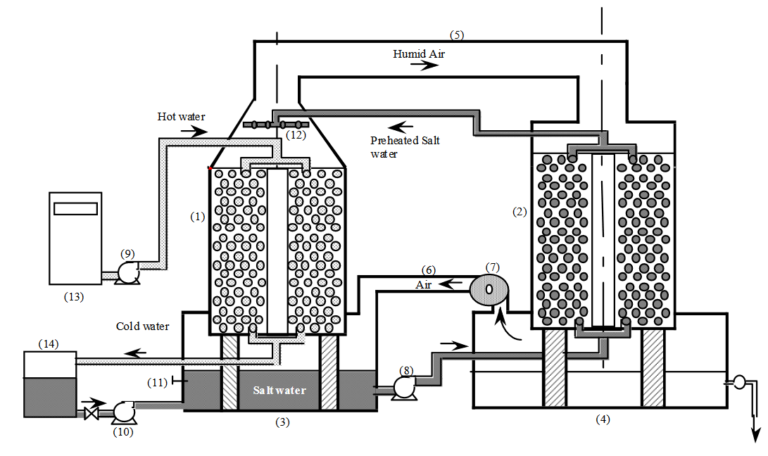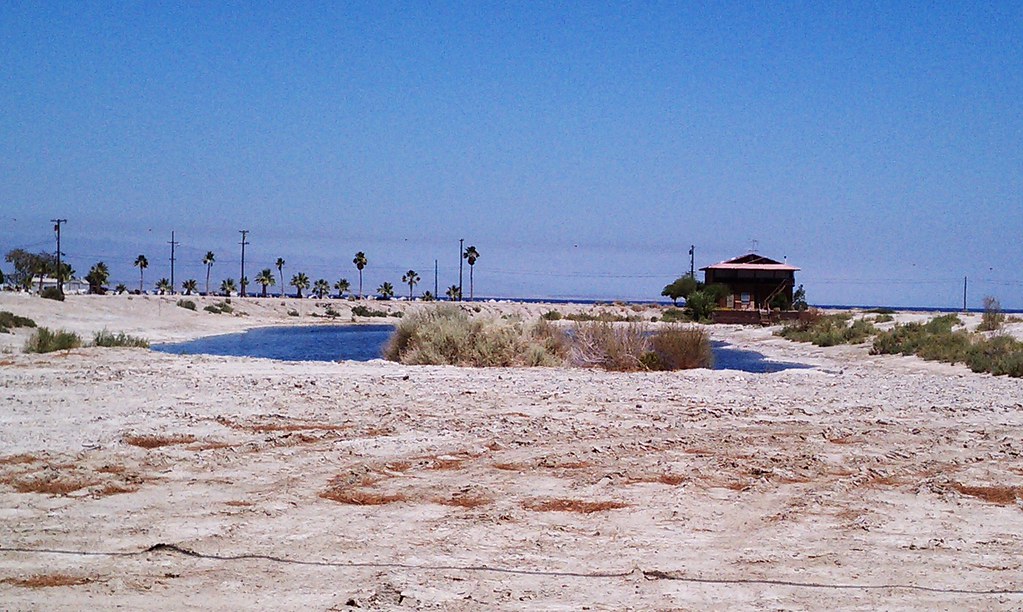Blog – Geothermal desalination: securing water resources for the future
In this great blog post by Jason Fisher, he shares details about desalination utilising geothermal energy, the techniques behind it and examples internationally.
In a blog post published by Jason Fisher on his blog, IsleofRocks30, he shares interesting posts on various topics from the geothermal energy sector. This week, I wanted to share one of his articles on desalination. Here is the article below.
There has been an increase in the number of severe water shortages coupled with extreme temperatures and droughts globally. This includes Cape Town (South Africa), Beijing (China) and more recently the water shortage and drought in Chennai (India) where many locals have relocated in the search for water. In the Caribbean there has been a number of water restrictions due to droughts. With global population projected to reach 9.8 billion in 2050 (from United Nations) coupled with challenges due to global warming we can expect an increasing pressure on current water resources and the need to identify and development alternatives. So what alternatives are currently being looked at? One method is desalination using renewable energy sources including geothermal.
Desalination (of sea and brackish water) has been around since 1972 and requires large quantities of energy (seawater more than brackish water). The selection of the appropriate renewable sources for desalination technology depends on a number of factors. This includes plant size, feed water salinity, remoteness, availability of grid electricity, technical infrastructure and the type and potential of the local renewable energy source. A number of methods exist for desalination and are classified as membrane and thermal separation processes. Only the thermal separation methods will be covered here.
Thermal separation techniques consist of two main methods 1 – evaporation followed by condensation of the formed water vapour; and 2- freezing followed by melting of the formed water ice crystals. The former process is the most used and nearly in all cases, coupled with power generation units. The includes multistage flash (MSF), multi effect evaporation\multi-effect distillation (MEE/MED), thermal vapor compression (TVC), multi effect boiling (MEB) and solar desalination methods. Low temperature geothermal energy is extensive and suitable for thermal separation desalination techniques.
A number of studies and test plants have been carried out using stand alone geothermal desalination or any number of combinations. An overview of some interesting ones can be found below.
Baja Peninsula Mexico (Baja California)
The National University of Mexico (UNAM) assessed the extent of renewable resources in the Baja California region and their applications for the seawater desalination. The study established that at 50 m depth, very high temperatures could be obtained, sufficient for use in binary geothermal power plants to generate electricity for desalination. Many locations with hot seawater were discovered, the best being at Los Cabos with a temperature of 85 °C.
Using satellite imagery they identified many surface manifestations (hot springs). The most important of these manifestations are the hot sea-water vents near Puertecitos, Bahia Conception and Ensenada. This discovery was followed by field studies including geochemical sampling and characterisation of the hot seawater as the quality and availability of hot seawater affects the design of a thermal desalination plant. A number of designs have been proposed which includes combinations of MED and MSF known as Multi-Flash with Heaters (MFWH) and Low Energy-Multi Effect Distillation (LE-MED) as well as Pressurized Water Generation (PWG). IMPULSA projects are ongoing.
Geothermal Resources of the Baja Penninsula/Baja California. From Gutiérrez, H., & Espíndola, S. (2010).
Greece
Milos Island
Milos Island is located in the Aegean Volcanic Arc and is characterized by abundant geothermal resources. The eastern part of the island including the plain of Zefyria is most promising for high enthalpy geothermal potential with temperatures of 300–323 °C at depths 800–1,400 m below sea level. On the other and, low enthalpy (<100 °C) geothermal resources are found in the eastern half of the island.
The Milos Island project aimed to construct and operate a low enthalpy geothermal energy driven water desalination unit producing drinking water (75 to 80 m3/h) and power. The geothermal water will be from the Vounalia geothermal area. To date 7 production and 3 re-injection wells have been drilled ranging in depths from 63 m – 185 m, yielding 20-100m3/h of water at temperatures of 55 °C to 99 °C. The plant design consisted of a dual system with hot water from the deep geothermal wells being used to run organic Rankine cycle (ORC) turbines for electricity generation (capacity of 470 – 600 kWe) and at the same time being used directly in a MED-TVC unit. The water to be produced could provide drinking water of the island. Unfortunately this project was not completed.
Kimolos Island
A geothermal desalination project pilot plant was built from 1998-1999. Geothermal waters was harnessed from a 188 m deep borehole with temperatures of 61-62 °C. A two staged desalination method was used that included MED. The unit used low enthalpy geothermal energy as heating and feed-water medium. 3.24 m3/h of fresh water was produced when the feed water (geothermal water) had temperatures of 61 °C and pumped at 50 m3/h. The project did not proceed beyond the pilot stages.
South Tunisia
In arid areas of Tunisia potable water is very scarce but the region has large resources of underground geothermal brackish (40°C to 90°C) water. In the south-west, agriculture (date palm and fruit farming) is one of the most important economical resource. For the further development of agriculture more water resources are required.
A desalination prototype utilizing the Aero-Evapo- Condensation Process (A.E.C.P) was developed and is able to operate at low temperatures (75-90°C), allowing the use of renewable energy (geothermal and solar).

Italy
Pantelleria, a small volcanic island in Italy is located among major tectonic plates and possesses significant geothermal resources. In order to reduce fresh water shortage in the island a MED plant powered by geothermal energy has been designed. The process designed uses a number of components/innovations that works best for the island based on the local factors. This includes a geothermal loop, desalinated water collection and seawater heat integration. Using a geothermal loop allows the reuse of geothermal heat and using the desalinated water in the geothermal wells reduces/prevents corrosion related issues. This set up makes the desalination process sustainable and reduces costs in the long wrong.
Summary
Low temperature Geothermal desalination can play a pivotal role in the quest to secure water resources globally. The examples presented here demonstrates the feasibility of geothermal desalination methods. However, the major barrier to development is the produced water cost associated with current technologies. So in order to fully realize the potential of geothermal desalination we must improve on current and create new technologies allowing the rapid reduction of produced water costs.
Sources/Further Reading
Arvanitis, A. (2017). Exploitation of low enthalpy geothermal resources in Greece. A presentation at the CRES Geothermal Workshop, Mati Attica 12.09.2017.
Abusharkh AG, Giwa A, Hasan SW (2015). Wind and Geothermal Energy in Desalination: A Short Review on Progress and Sustainable Commercial Processes. Ind Eng Manage 4: 175. doi:10.4172/2169-0316.1000175.
Awerbuch, L., Van der Mast, V., & Canton, G., (2016). Geothermal Desalination potential for clean and affordable new water solutions. Presented at IDA International Energy and Environment Forum Creative Solutions and Innovative Strategies for Today’s Water Challenges December 7-8, 2016 Hilton Miami Downtown, International Desalination Association.
Bourouni, K., & Chaibi, M. T. (2005). Application of geothermal energy for brackish water desalination in the south of Tunisia. Proceedings World Geothermal Congress 2005, Antalya, Turkey, 24-29 April 2005.
Goosen, M., Mahmoudi, H., & Ghaffour, N. (2010). Water Desalination Using Geothermal Energy.Energies, 3(8), 1423-1442.
Gutiérrez, H., & Espíndola, S. (2010). Using low enthalpy geothermal resources to desalinate sea water and electricity production on desert areas in Mexico. GHC Bulletin, 29, 19-24. Proceedings World Geothermal Congress 2010 Bali, Indonesia, 25-29 April 2010
Karytsas, C., Mendrinos, D., & Radoglou, G. (2004). The current geothermal exploration and development of the geothermal field of Milos Island in Greece. GHC Bulletin, June.
Turchi, C. S., Akar, S., Cath, T., Vanneste, J., & Geza, M. (2015). Use of low-temperature geothermal energy for desalination in the Western United States (No. NREL/TP-5500-65277). National Renewable Energy Lab.(NREL), Golden, CO (United States).
Source: IsleofRocks30



















